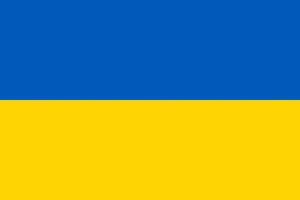Language/Ukrainian/Grammar/Gender
Hi Ukrainian learners! 😊
In this lesson, we will be discussing the importance of understanding gender in the Ukrainian language. Gender is one of the most important aspects of Ukrainian grammar, and it is essential to learn the gender of a noun in order to use it correctly in a sentence. Ukrainian, like many other languages, has three genders: masculine, feminine, and neuter.
Don't miss the chance to check out these pages as you wrap up this lesson: The possessive pronoun sviy & Give your Opinion.
Masculine Gender[edit | edit source]
Masculine nouns refer to male persons, animals, and objects such as furniture, books, and cars. Masculine nouns usually end in a consonant, or certain vowels such as -o, -e, -or or -ar. However, there are some exceptions to this rule. It is common for masculine nouns ending in a consonant to have an -o or -e added to the suffix in the plural form.
Examples:
| Ukrainian | Pronunciation | English |
|---|---|---|
| батько | bat'ko | father |
| син | syn | son |
| олень | olen' | deer |
Dialogue:
- Person 1: Хто той хлопець? (Khto toy khlopest?) (Who is that boy?)
- Person 2: Той хлопець - мій брат. (Toy khlopest - mii brat.) (That boy is my brother.)
Feminine Gender[edit | edit source]
Feminine nouns refer to female persons, animals, and objects such as tables, phones, and bags. Feminine nouns usually end in the vowel -а or -я, but there are some exceptions. They can be also identified by the softness or hardness of the spelling. Feminine nouns that end in -ь are often preceded by a soft consonant.
Examples:
| Ukrainian | Pronunciation | English |
|---|---|---|
| мати | maty | mother |
| сестра | sestra | sister |
| кицька | kits'ka | cat (female) |
Dialogue:
- Person 1: Хто та дівчина? (Khto ta divchina?) (Who is that girl?)
- Person 2: Та дівчина - моя сестра. (Ta divchina - moya sestra.) (That girl is my sister.)
Neuter Gender[edit | edit source]
Neuter nouns refer to objects, concepts or animals that are of neutral gender, such as plants, metals, and materials such as wood, steel and oil. Neuter nouns usually end in -о, -е, or -я/-ія.
Examples:
| Ukrainian | Pronunciation | English |
|---|---|---|
| вікно | vikno | window |
| море | more | sea |
| листя | listya | leaves |
Dialogue:
- Person 1: Що це за рослина? (Shcho tse za roslyna?) (What is this plant?)
- Person 2: Це красиве кущове листя. (Tse krasive kushchove listya.) (This is a beautiful bushy leaf.)
Exceptions[edit | edit source]
There are some Ukrainian nouns that do not fit into any of the three genders. These nouns are considered to be of a different gender, known as the common gender. Typically, it is difficult to determine the gender of these nouns until they are used in a sentence.
Examples:
| Ukrainian | Pronunciation | English |
|---|---|---|
| дитина | dytyna | child |
| людина | liudyna | person/human being |
| герой | heroy | hero |
Dialogue:
- Person 1: Хто там стоїть? (Khto tam stoiit?) (Who is standing there?)
- Person 2: Людина, яка шукає деякий товар. (Liudyna, yaka shukae deiakyi tovar.) (A person who is looking for some goods.)
Using Gender in Sentences[edit | edit source]
The gender of Ukrainian nouns plays an important role in the formation of sentences, especially in verb conjugation, adjective declension, and pronoun usage. Below are some examples of how gender is used in Ukrainian sentences.
- Мій старий дідус любить грати в шахи. (Miy staryi didus liubyit hraty v shakhy.) (My old grandpa likes to play chess.)
In this sentence, the masculine noun "старий дідус" (old grandpa) is used with the masculine adjective "старий" (old), and the masculine pronoun "його" (his) would also be used in reference to "старий дідус".
- Лоша біжить по лузі. (Loshcha bizhyt' po lusi.) (The horse is galloping through the meadow.)
In this sentence, the feminine noun "лоша" (horse) requires the feminine verb form "біжить" (is galloping).
Conclusion[edit | edit source]
In conclusion, understanding gender in the Ukrainian language is crucial for effective communication. Identifying the gender of a noun is the first step to using it correctly in a sentence, and can have a significant impact on grammar, pronunciation, and even the meaning of the sentence. Keep practicing, and have fun learning!
➡ If you have any questions, please ask them in the comments section below.
➡ Feel free to edit this wiki page if you think it can be improved. 😎
Sources[edit | edit source]
Well done on mastering this lesson! Don't miss these related pages to expand your knowledge: Pronouns & Adverbs of quantity: how many.
Videos[edit | edit source]
The NOUN. Gender of the noun. Basic Ukrainian grammar. - YouTube[edit | edit source]
How to know noun gender in Ukrainian language? Рід іменника ...[edit | edit source]
Ukrainian lesson 3. Gender of nouns - YouTube[edit | edit source]
Ukrainian lessons 4. Noun Genders, Animateness & Inanimateness ...[edit | edit source]
Plural of Nouns in the masculine gender in Ukrainian # 22 - YouTube[edit | edit source]
Other Lessons[edit | edit source]
- Give your Opinion
- Personal Pronouns
- The possessive pronoun sviy
- Possessive pronouns
- Cases
- Plurals
- Adverbs of quality, quantity and manner
- Past imperfective Tense
- Adjectives
- How to Use Have

